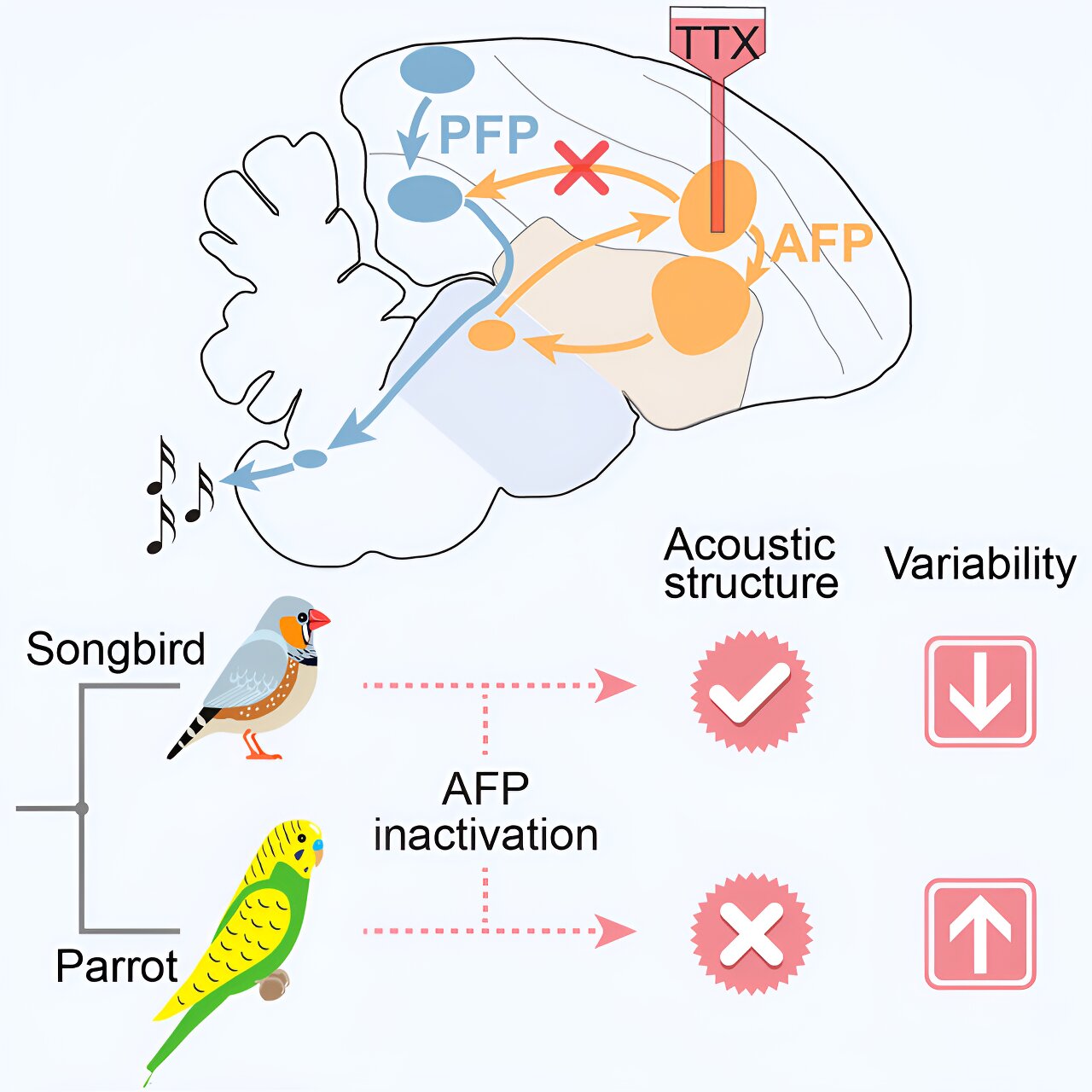

When humans learn to speak a language, we learn to produce new vocalizations and use them flexibly for communication, but how the brain is able to achieve this is an important but largely unanswered question, according to Zhilei Zhao, Klarman Fellow in neurobiology and behavior in the College of Arts and Sciences (A&S).
To explore this question, Zhao and Cornell collaborators compared the brain pathways of songbirds and parrots. The two groups diverged 50 million years ago but both have vocal learning ability. The researchers found drastically different effects in the two species’ brain mechanisms, providing a clue into how parrot—and human—brains allow continuous, flexible vocal learning.
“Anterior forebrain pathway in parrots is necessary for producing vocalization with individual signatures” is published in Current Biology on Dec. 8 with Zhao as first author.
Songbirds and parrots make a useful comparison because they have distinct evolutionary histories and vocal learning capacities, Zhao said.
Zebra finches, the most studied songbird species, learn one song during the juvenile stage and have little change afterward. This is very different from parrots and humans, who continuously learn new vocalizations throughout life and produce flexible vocal sequences.
Songbirds and parrots both have two major pathways in the brain: anterior and posterior. In songbirds, these two pathways are known to play different functions. But what functions they play in parrots remains unknown.
To test if song systems of parrots have a similar neural function as in songbirds, the researchers temporarily and reversibly inactivated each of the neural pathways in the parrots and found very different effects in parrots from those in songbirds.
Songbirds can continue to produce their vocalizations using only the posterior pathway, but in parrots, isolation of this pathway led to a complete breakdown of vocal ability. The experiment showed that parrots need the anterior forebrain pathway to produce learned vocalizations with individual signatures.
These results suggest that their functions have diverged significantly, even though anatomically they look similar, Zhao said, “In short, to learn continuously and vocalize flexibly like humans do, parrots have evolved brain mechanisms distinct from those in songbirds.”
More information:
Zhilei Zhao et al, Anterior forebrain pathway in parrots is necessary for producing learned vocalizations with individual signatures, Current Biology (2023). DOI: 10.1016/j.cub.2023.11.014
Provided by
Cornell University
Citation:
Parrots and songbirds have evolved distinct brain mechanisms, study shows (2023, December 8)
retrieved 8 December 2023
from https://phys.org/news/2023-12-parrots-songbirds-evolved-distinct-brain.html
This document is subject to copyright. Apart from any fair dealing for the purpose of private study or research, no
part may be reproduced without the written permission. The content is provided for information purposes only.





